
Lot MIDDLE EASTERN JAMBIYA DAGGERS KNIFE LOT OF 2
Introduction From the Middle Ages, men of the southern Arabian Peninsula wore daggers in their belts, both as a means of protection and a useful tool (see Figure 1 ). As the cultures of the region evolved, the design of these daggers came to represent distinct areas, tribal affiliations, and status symbols.

2 Middle Eastern Arabic daggers,
Type A ribbed dagger from Rishon LeZion, Tomb B24. (Credit: Kan‐Cipor‐Meron et al. 2018). Thanks to a generous CBRL Travel Grant and the unwavering support of my Haifa hosts, I travelled to Israel in October 2018 to put 20 daggers from the Middle Bronze Age cemetery of Rishon LeZion to the microscope test.

Middle Eastern Daggers A Trio of Traditional Blades Edged Weapons Militaria & Weapons
A very nice example of an original Late 19th/Early 20th Century North African (Moroccan) Jambiya dagger with the expected signs of light use. Some minor scattered handling marks and light evidence of cleaning. A classic Dress type Near Eastern Dagger of classic deign, ca. 1940. Overall length, 17". Price: $300.00

Antique Syria Syrian Middle East Dagger Kindjal Knife
A rondel dagger or roundel dagger was a type of stiff-bladed dagger in Europe in the late Middle Ages (from the 14th century onwards), used by a variety of people from merchants to knights.. in Western Europe by the beginning of the 17th. Century, though the lance persisted in Eastern Europe, from whence it was reintroduced into the European.
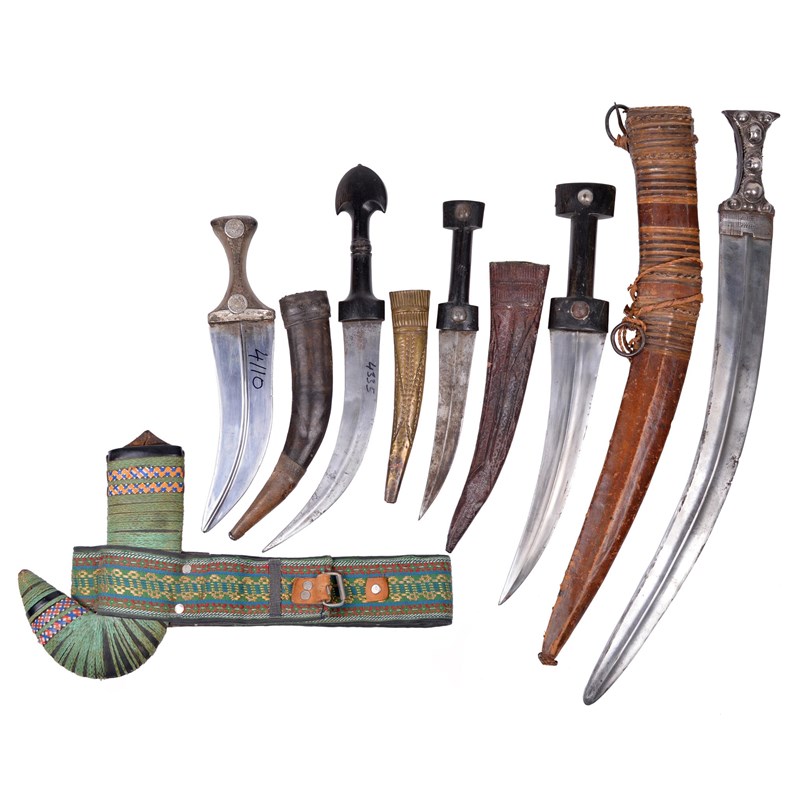
Five middle eastern daggers (jambiya) Woolley and Wallis
This is a list of historical pre- modern weapons grouped according to their uses, with rough classes set aside for very similar weapons. Some weapons may fit more than one category (e.g. the spear may be used either as a polearm or as a projectile ), and the earliest gunpowder weapons which fit within the period are also included. Offensive weapons
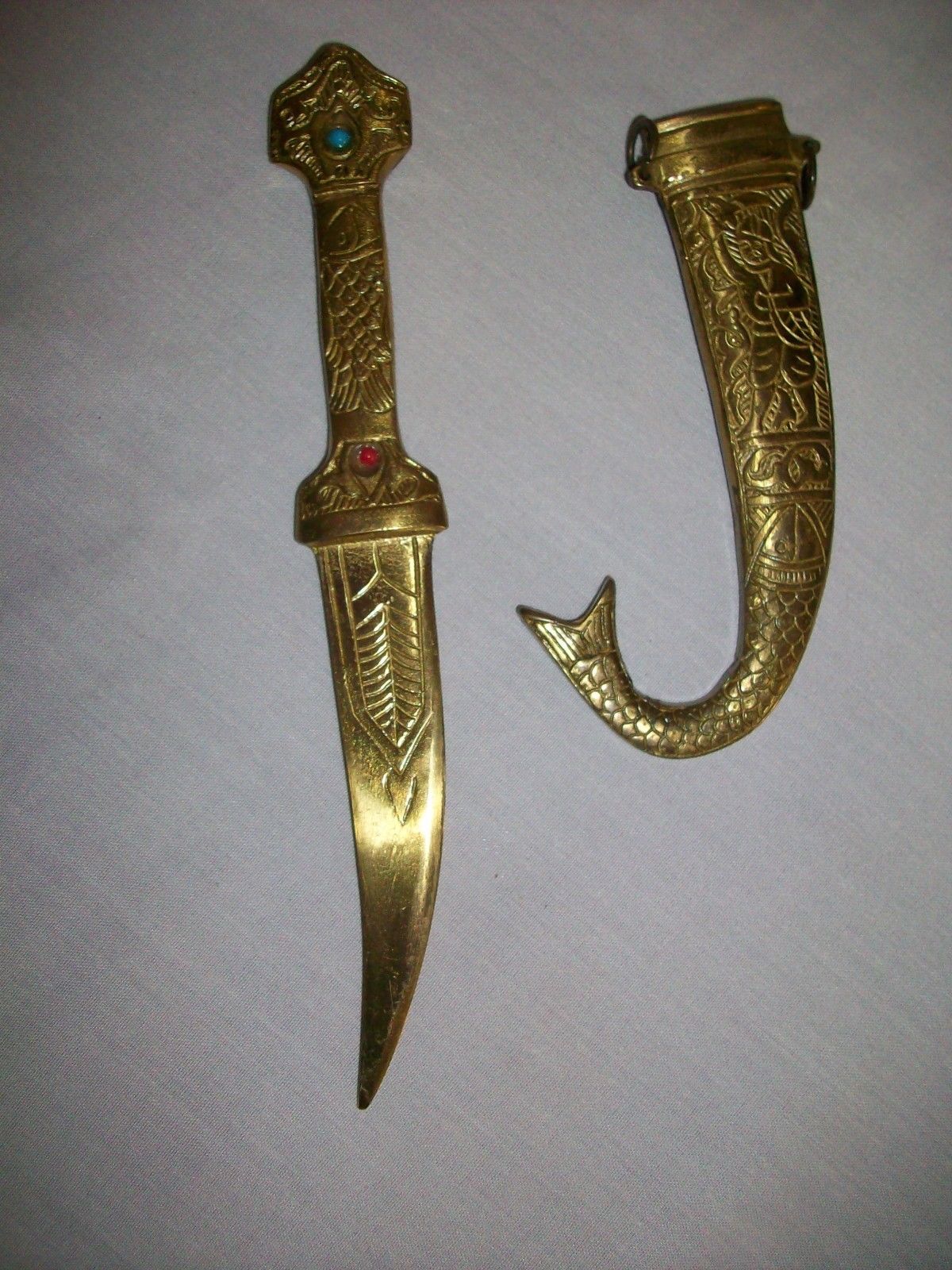
VINTAGE MIDDLE EASTERN KNIFE/DAGGER IN SHEATH BRASS TURQUOISE/CORAL STONES Antique Price
10. Daggers. Essentially a smaller version of the sword, one should not disregard it as an important weapon of war. Ranging in size from 30 to 50 centimetres (11 to 20 inches), it was a common instrument, both on the battlefield and in day-to-day use. Easy to carry - and hide - daggers could be used with a minimum of training.

A Middle Eastern curved dagger with wood handle and white me
The daggers are both functional art and potent symbols of Middle Eastern manhood that have underpinned the honor code and culture that once united Arab tribes across the Levant and the Gulf..
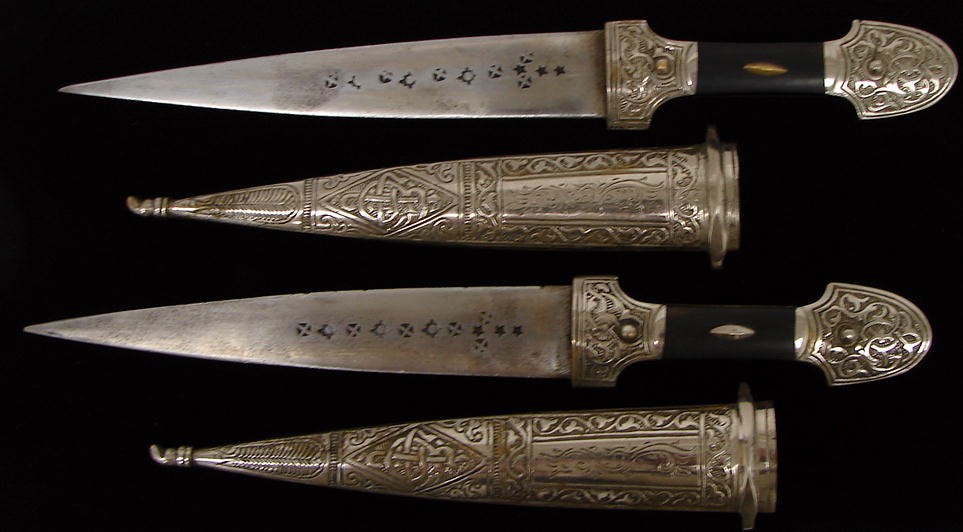
Pair of Middle Eastern daggers (K753)
1. The Scimitar One of the most iconic swords in Middle Eastern history is the scimitar. This sword has a curved blade and is often associated with Arabian culture. It was used primarily for slashing and cutting in battle. Scimitar, Photo: Rama via Wikimedia Commons What Are the Top Types of Viking Warriors? Berserkers, Jomsviking. 2. The Shamshir
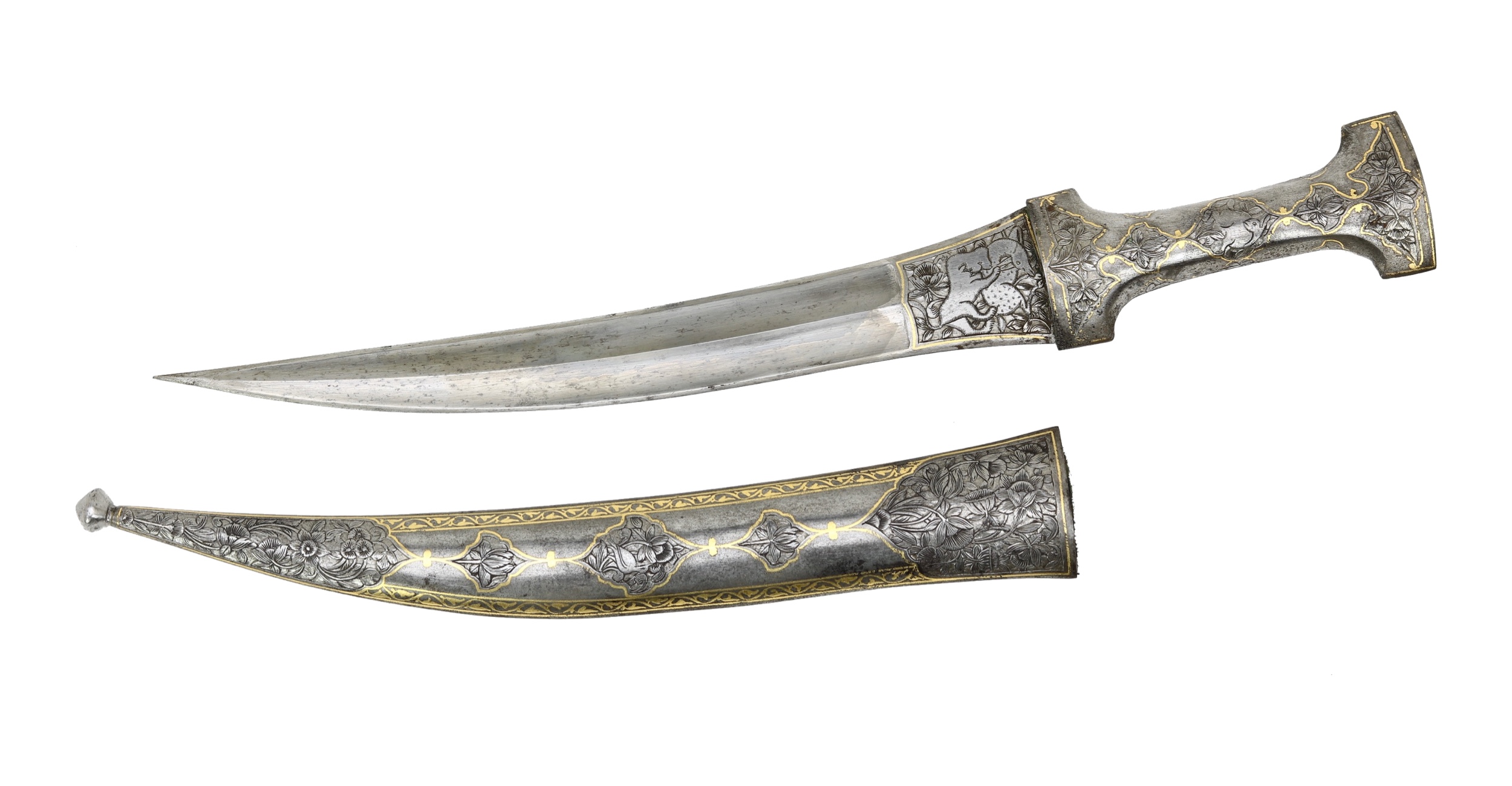
Persian all steel mounted khanjar Mandarin Mansion
List of daggers The following is a list of notable daggers, either historical or modern. A dagger is a knife with a sharp point designed for fighting. Ancient daggers Acinaces Bronze Age dagger Parazonium Pugio Sica European tradition High Middle Ages Knightly dagger Late Middle Ages
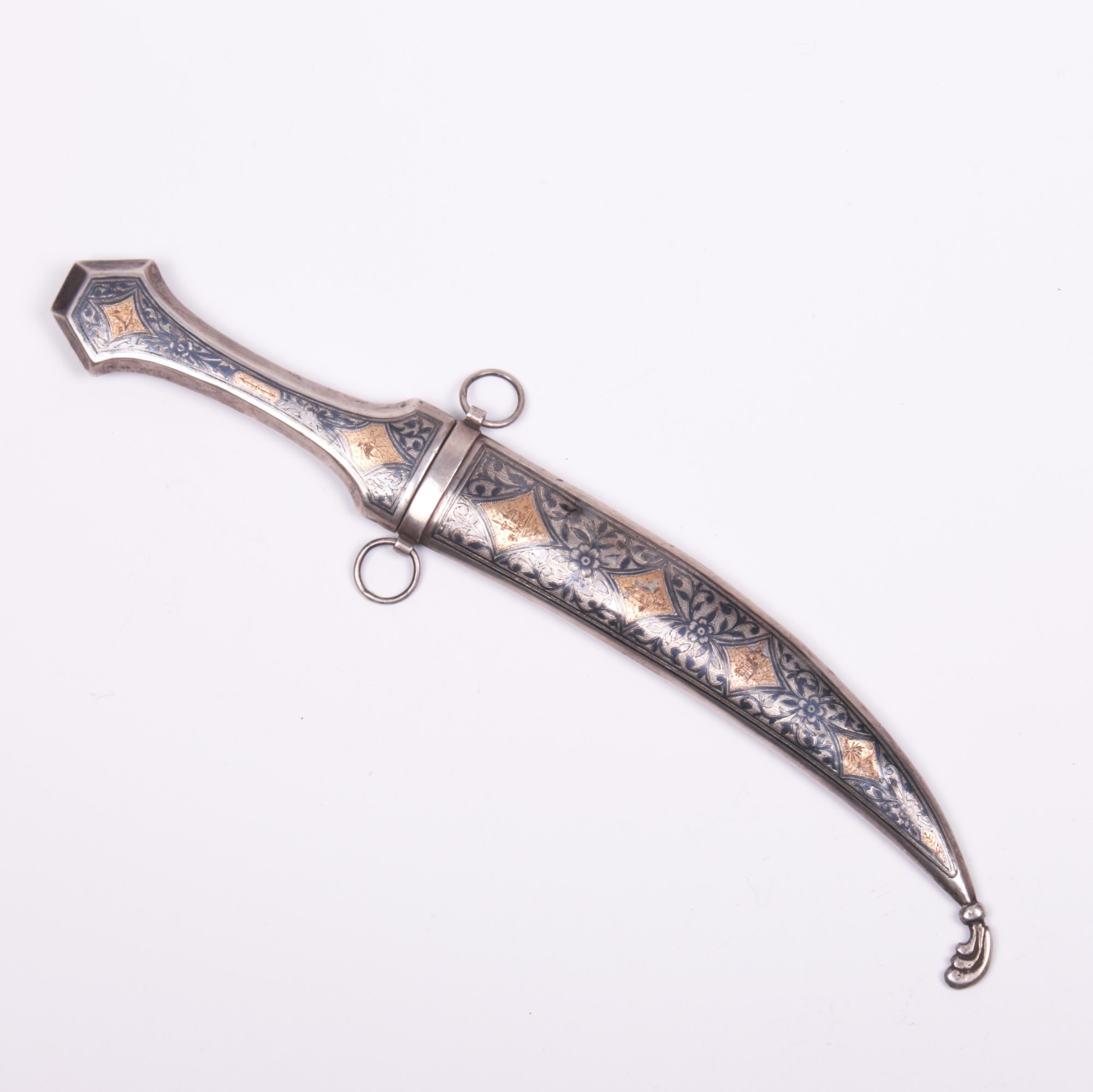
Middle East dagger. Antique weapons, collectibles, silver, icons, bronze, swords, daggers..
Middle Eastern and Islamic swords and daggers possess unique characteristics that set them apart from other blades. While not all blades will have the same design techniques, many possess Damascus steel blades, etching, gilding, inlay, and jewel settings. Gold and silver are common materials found on Middle Eastern hilts and scabbards.

A Middle Eastern curved dagger with wood handle and ornately
Middle Eastern, Indian & N. African Swords Short Swords Sword Care & Maintenance US Civil War Swords Military Swords Sword Stands & Displays Modern Tactical Swords Belly Dance Swords Cutting Targets Fantasy Swords Sword Canes Plastic & Wood Training Swords Weapons Knives & Daggers Spears & Spearheads Archery Axes, Hatchets & Tomahawks

Antiques Atlas Middle Eastern Dagger
A jambiya, also spelled janbiya, jambya, jambia and janbia ( Arabic: جنبية janbiyyah ), also known as a shibriyeh ( Arabic: شبرية shibriyyah) in the Levant, is a specific type of dagger with a short curved blade with a medial ridge that originated from the of Saudi Arabia.

Four middle eastern daggers (jambiya) Woolley and Wallis
Types Of Daggers Noblie / Blog / Types Of Daggers November 5, 2022 Contents [ hide] 1 What is the difference between a dagger and a knife? 2 First daggers - where did they come from? 3 What is a dagger good for? 4 Are daggers still used today? 5 Are there different types of daggers? 6 What are European daggers? 7 Bollock Dagger 8 Misericorde dagger

Middle Eastern dagger,
A South Arabian Figure c200 to 100 BC. The distinctive Arab dagger is one of the most iconic aspects of Arabian arms and armour. Beautifully decorated examples carry such artistic and cultural significances that they have earned places in the best museums and private collections around the world.

A Magnificent Saudi Dagger From Hejaz / Asir Oriental Arms
List of Medieval Daggers and Short Swords [Updated] The Middle Ages are associated with chivalric swords and a range of weapons for use on the battlefield. Daggers and short swords are less popular but still important to consider when studying weaponry of the medieval period.

Two Middle Eastern ornamental daggers with plated sheaths, length of the longest 25cm (2
Scimitar Two styles of scimitars: an Egyptian shamshir ( left) and an Ottoman kilij ( right) A scimitar ( / ˈsɪmɪtər / or / ˈsɪmɪtɑːr /) [1] is a single-edged sword with a convex curved blade [2] [3] [4] associated with Middle Eastern, South Asian, or North African cultures.